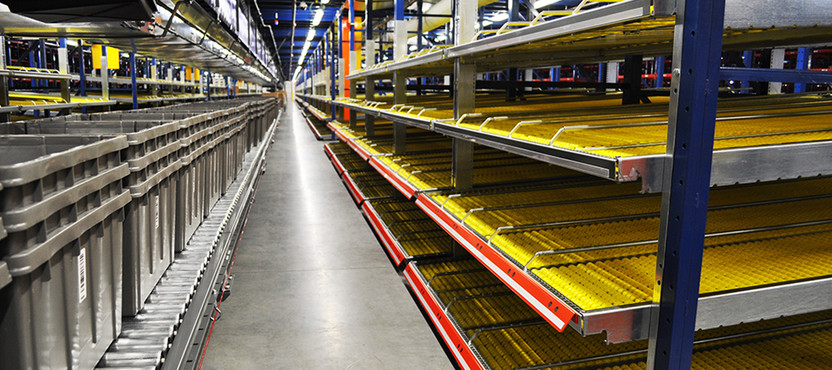The Evolution of The Warehouse
Posted by ASG Services on Mar 30th 2021
From just-for-food to just-in-time:
The warehouse is such a basic part of commerce that no one outside the storage and shipping industries really thinks about it that much. But without warehouses, societies would have turned out very differently, had they survived at all. While the basic function of the warehouse hasn't changed all that much -- there have been variations, but they've all stemmed from the same purpose -- the details have changed tremendously as technology has advanced.
The original purpose: survive lean times
The first known warehouses weren't so much houses or buildings as they were convenient storage spaces that didn't promote rot in food. Initially, these storage spaces were meant to store surplus food for lean times. Shipping the food to faraway lands on a private citizen's order, as might be done now with a pack of protein bars, was unheard of.
Gradually these storage spaces grew to include other goods used in the home, for construction, and for daily life. As civilizations grew and began to increase their commercial reach and technological use, they had more goods to store. Regions such as Venice became known as warehouse and storage hubs because of access to ports and well-trodden land routes for trading. These areas also initiated the use of such tracking procedures as receipts.
The division of warehouse storage into spaces with specific purposes and categories of storage ramped up during the industrial revolution and the decades following it, as companies created rail- and boat-linked hubs that functioned both as warehouse storage and shipping centers. Many of these warehouses were further devolved into specialized locations for specific activities along the supply chain, such as packing goods for shipment.
As automation crept its way into warehousing and shipping, the different warehouses and storage sites were reconsolidated. This centralization allowed automated devices like conveyor belts to connect storage and packing functions.
With computerization and the ability to track items by barcode came the just-in-time supply chain. Instead of having several weeks' worth of goods stockpiled at a local warehouse, most stored items stayed in a central location -- a distribution hub -- and were shipped out to different localities as needed. Inventory control through the use of scanners and codes, as well as RFID chips, has allowed stores and other businesses to order more efficiently and promptly, making stockpiling less necessary. Advances in shipping times and connections have also helped companies make this switch.
The central distribution hub with on-demand shipping remains the dominant model, but now computerized algorithms have made the process even faster. In companies like Amazon, for example, an algorithm creates a path for a human picker to follow to grab items in the most efficient way possible. While not every company uses a similar algorithm, other methods are often close; computer systems keep track of where everything is stored and whether something is in stock, and humans can head straight for that item, rather than wandering aisles and relying on memory.
These systems rely on accurate labeling and marking of both the products and the pathways through the warehouse. ASG offers comprehensive warehouse and storage labeling and coding, allowing you to quickly gain control of your inventory and shipping processes. Whether you need only a few barcodes or if you need to have your entire storage space labeled, ASG has a solution for you.

